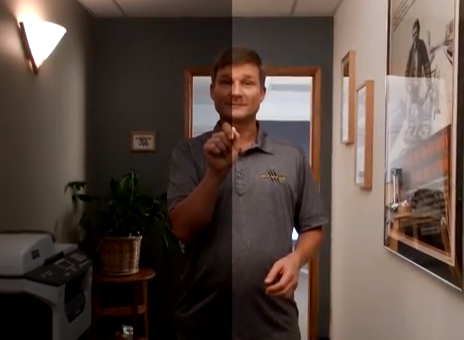


Many of the technical adjustments that are made to improve video quality in the post-production phase are things most people don’t notice – if they’re done right. Take color correction, for example. In a short video demonstration, hosted by Terence Curren, colorist and veteran of the film and television industry, we see how a number of production-created problems can be easily repaired in post-production with color correction. With the use of a split screen to show the before-and-after imagery, Curren shows in vivid detail the impact these changes make on the final product.
For example, when shooting in a poorly lit space or with a camera that hasn’t been properly balanced, you might end up with a scene where the talent appears too dark, bright objects appear too bright, and other distortions. Or you might need to make adjustments for two-camera shots to allow cutting back and forth between cameras without the jarring effects created by mismatched camera set-ups. Color correction also helps fine-tune color balance when a single scene moves from indoor lighting to sunlight, which casts a decidedly blue light.
Tektronix waveform monitors – or scopes as they are called in the industry – play a critical role in the color correction process. As analytical tools, scopes provide precise information that guides the colorist in fixing color correction problems, while also providing a fixed, objective reference to ensure consistency. Waveform monitors also help colorists verify that the luma and chroma signals fall within technical limits supported by broadcaster and cable service providers.
For anyone interested in learning more about the importance of color correction, be sure to download our graphical and intuitive Understanding Color and Gamut Poster.


